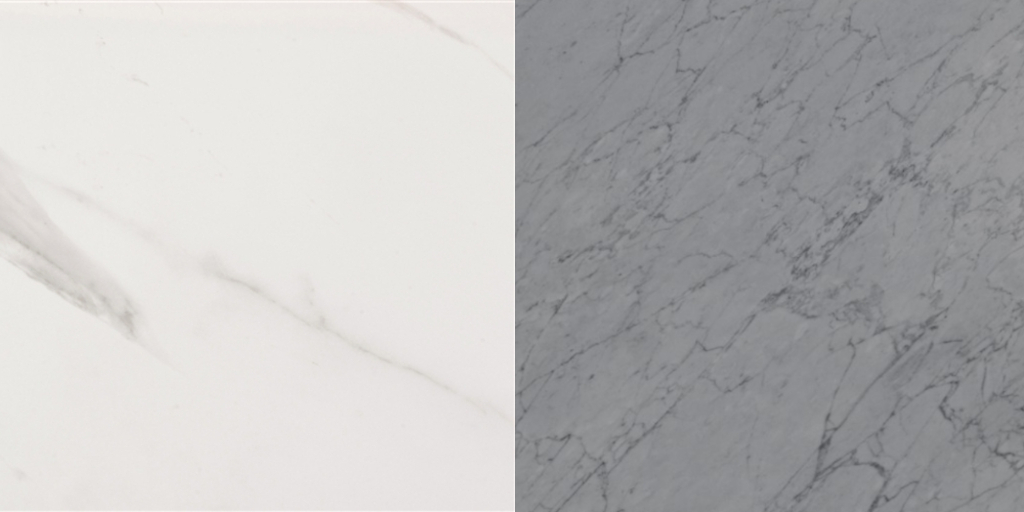Sintered Stone vs Porcelain
The stone industry is loaded with materials designed for performing under specific circumstances. The number of materials designed to function as kitchen counters, floor tiles, and wall panels include the two materials we will look at in this article. In our considering sintered stone vs porcelain, we will see how these materials are related and traits they have in common. We will also look at the different between them and how it affects what each material is called. So if you’re ready, let’s get into our consideration of sintered stone vs porcelain.
A Brief Consideration of Porcelain
If you have heard of Crossville, Florim, Antolini, or SapienStone, then you are more than likely familiar with porcelain tiles and/or countertops. Porcelain surfaces have been around and used by designers and architects for many years. In more recent years though porcelain has begun to be used for countertop surfaces. Fabricators that work with natural stone in kitchens and other applications already possess the basic tools needed to work with porcealin to make countertops. Diamond blades for bridge saws is all that a fabricator might need to add in the way of tooling in order to begin working with porcelain.
How is Porcelain Produced
Porcelain is a material that is produced using a process known as sintering. So, porcelain is a sintered material. What is sintering? Well, you can get a definition here. So sintering entails transforming powdered material into a hard mass of a different material. Heat and pressure are used to force the transformation. In the case of porcelain, powdered raw materials like clay, silica, feldspar, and flint are sintered and the result is a hard mass. The mixture ratios affect the final result. So, adjusting the quantities of each raw material, will give slightly different results.
What is Sintered Stone
As the name implies, this material is produced using the sintering process as well. And just as porcelain uses specific tooling for cutting it, the same it true for sintered stone. Sintered stone diamond blades are available for use on these materials. But how is it that sintered stone is actually a different material than porcelain? Well, the fundamental difference is that sintered stone is made using different raw materials. Although, it may contain some of the same minerals as porcelain, there are other materials in sintered stone that porcelain does not have and vice versa.
Since the raw materials affect the result and porcelain and sintered stone use different raw materials, these materials end up being different. But how do the two surface types differ and how are they similar? Let’s see.
Similarites Between Porcelain and Sintered Stone
One of the similarities between sintered stone and porcelain is that each material is able to be used for a variety of applications. Porcelain and sintered stone are used for floor and wall tiles, building facades, and countertops.
Similar Strengths
A characteristic looked for in hard surfaces used as a countertop is its hardness. The harder a material is, the more scratch resistant it will be. Both sintered stone and porcelain are very hard and resist scratching extremely well. So, using either of them as a countertop material means your surface will be scratch resistant.
Similar Cleaning and Stain Removal
Another similarity that exists between sintered stone and porcelain is that each is chemical resistant. That means various kinds of cleaners and stain removers can be used on these materials. Some hard surfaces can be cleaned with certain kinds of stain removers but not others. For example engineered quartz can be cleaned using acidic stain removers but do not react well with alkaline. On the other hand, natural stone materials like travertine and onyx should not be cleaned using acidic cleaners because it etches the surface.
In the case of sintered stone and porcelain though, you can clean them using a much larger number of chemicals. Alkaline cleaners and acidic stain removers can be used on both of these materials. Depending on the nature of the stain or the substance you are trying to remove, just select the proper cleaner, test it in an inconspicuous area, and use it after the cleaner proves to be safe for use.
Sintered Stone and Porcelain Differences
We have already talked a little bit about what makes these materials different from one another. But it boils down to the raw materials used. The material used produces a unique result. Each porcelain manufacturer and sintered stone producer has a proprietary mixture of raw materials that makes their product different from the others.
Another difference is that sintered stone color goes all the way through the slab. On the other hand, porcelain slabs are glazed with the pattern being put on and the colors do not run throughout the entire slab.
As we have seen in this consideration of sintered stone vs. porcelain, these materials are quite similar. Yet, they do differ from one another. And if you are trying to choose between them, it might just come down to the pattern or color that you like the most.

